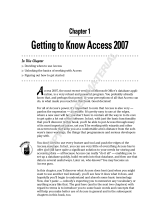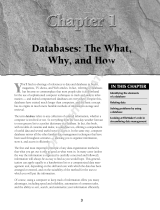
Welcome to FileMaker Pro 1-7
Updating your User Dictionary
If you have added words to your User Dictionary in either a previous
version of FileMaker Pro or another FileMaker, Inc. (or Claris) product,
then you must export that User Dictionary to a text file, then import it
into the User Dictionary in FileMaker Pro 4.1.
To export the User Dictionary from FileMaker Pro 2.x and later:
1. In your previous version of FileMaker Pro, choose Spelling from the
Edit menu, then choose User Dictionary.
2. Click Text File (or the Text flag in FileMaker Pro 2.x) to show the Import
and Export buttons.
3. Click Export and export the text file containing the words from your
previous User Dictionary.
To import this file into the User Dictionary in FileMaker Pro 4.1:
1. Open a database in FileMaker Pro 4.1, choose Spelling from the Edit
menu, then choose Edit User Dictionary.
2. Click Text File to show the Import and Export buttons.
3. Click Import and import the text file containing the words from your
previous User Dictionary.
Opening files from previous versions
FileMaker Pro 4.1 can open both Windows and Mac OS-compatible
files created by FileMaker Pro 2.0 or later.
FileMaker Pro 3.x databases
You do not need to convert 3.x files. In FileMaker Pro 4.x, you can open
files created with FileMaker Pro 3.x; in FileMaker 3.x, you can open
files created with FileMaker Pro 4.x. However, new 4.x features are not
supported when you open files in 3.x. For example, rotated fields will
appear as ordinary fields in 3.x.
FileMaker Pro 2.x databases
When you convert a FileMaker Pro 2.x file, FileMaker Pro 4.x software
saves your original FileMaker Pro 2.x file and creates a copy that has
been converted to the FileMaker Pro 3.x-4.x format. The original file is
not modified and you can open it in FileMaker Pro 2.x. The converted
file can only be opened in FileMaker Pro 3.x or FileMaker Pro 4.x.
Important Save a backup copy of your database files before opening
them in FileMaker Pro 4.1.



























